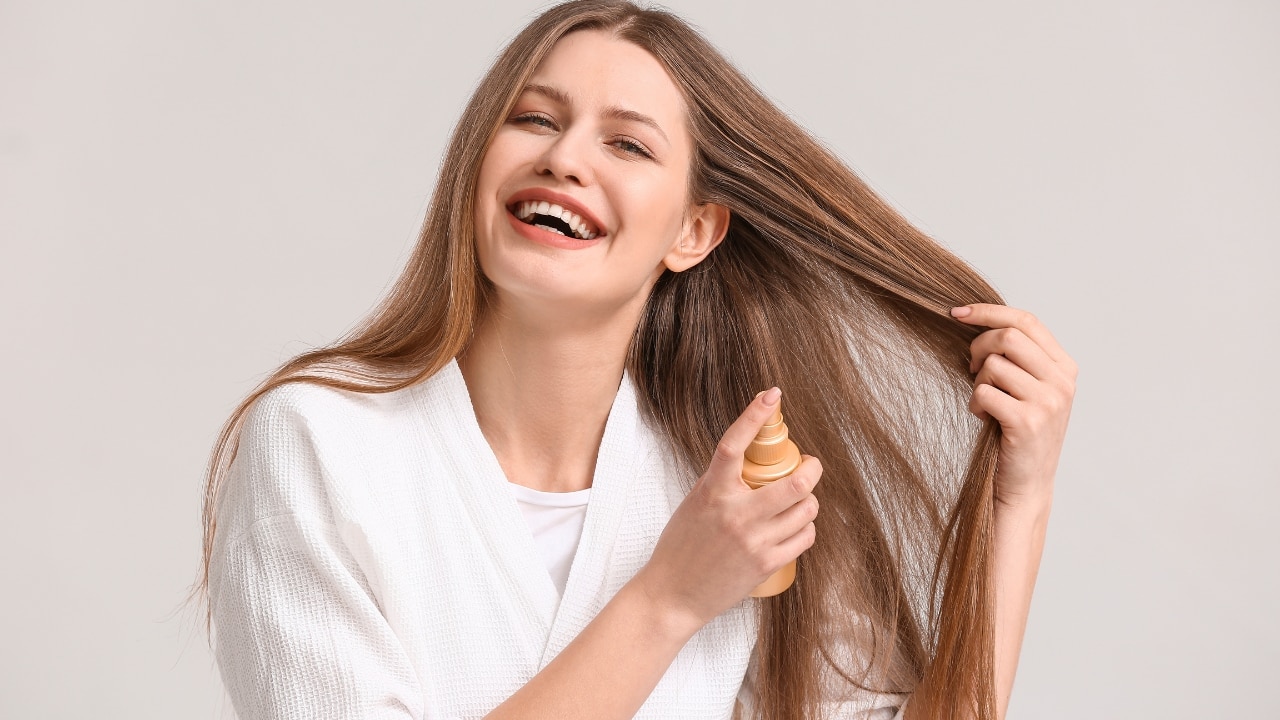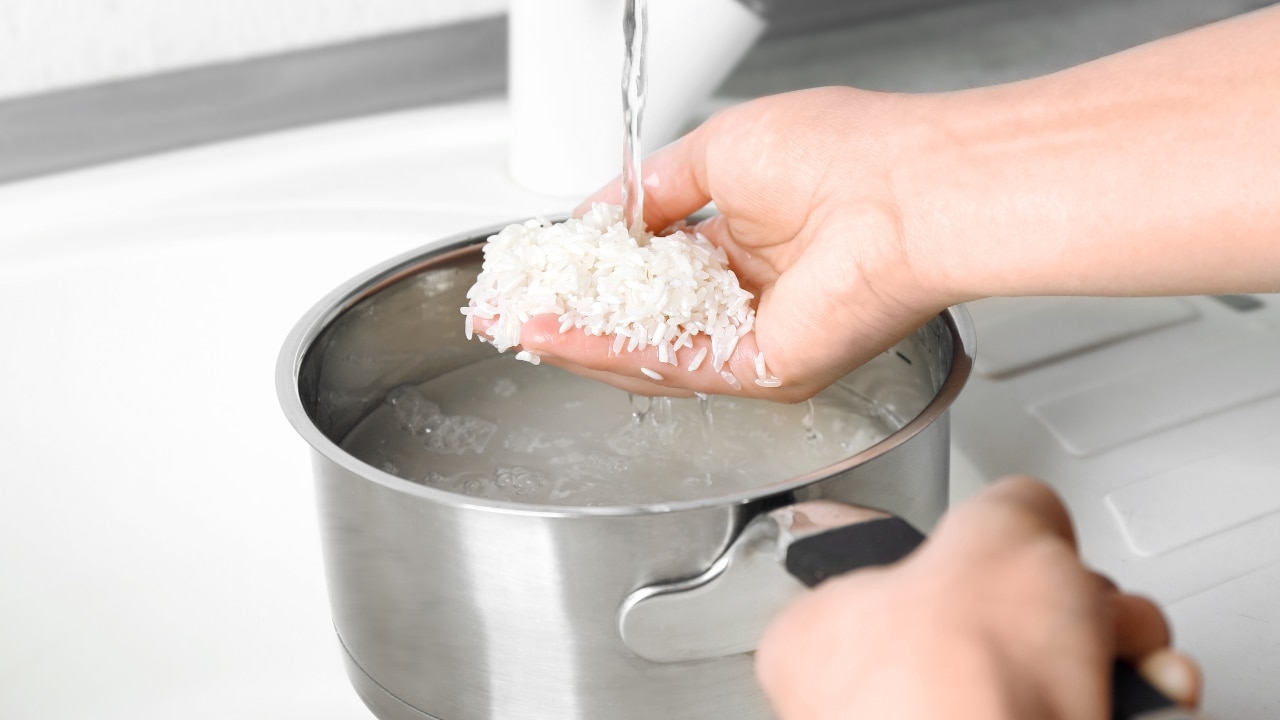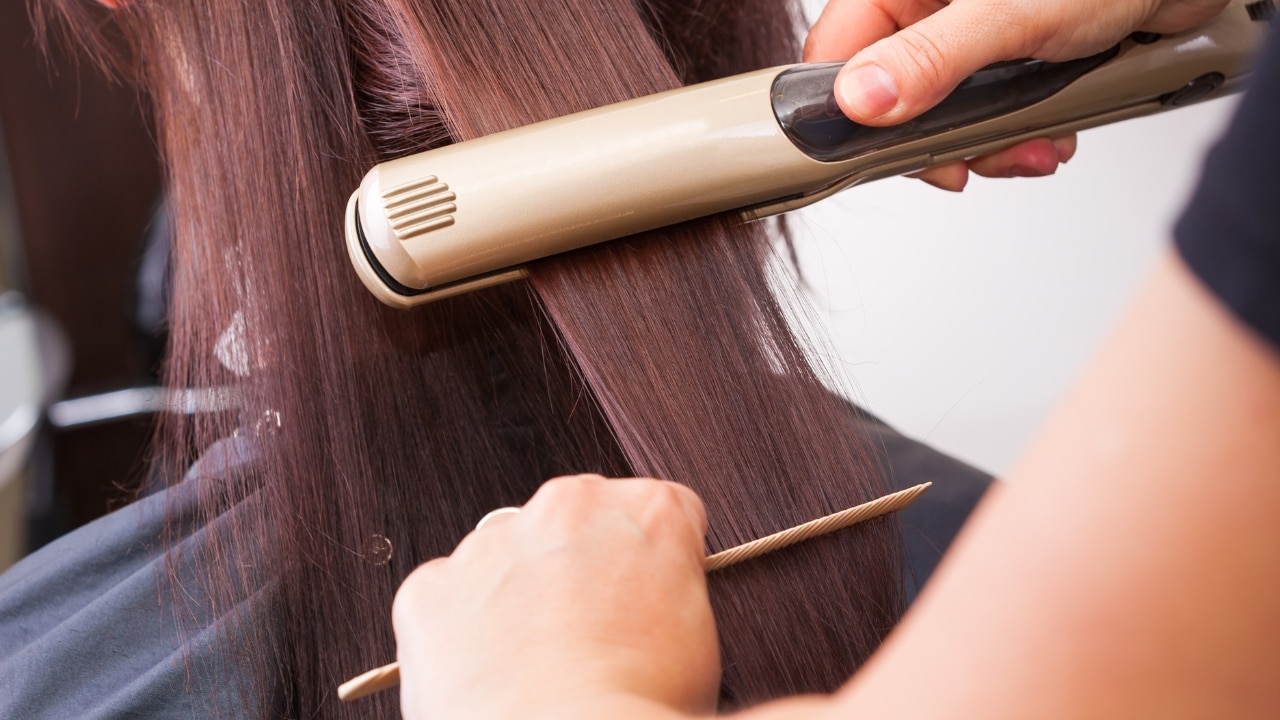Hair straightening is a sure-shot way of getting smoother, sleeker and softer hair that is free of frizzy flyaways. Regardless of your original hair texture, you can straighten your locks in various ways. While you might already be familiar with in-salon treatments like rebonding and at-home methods like straightening with a blow dryer, there are more ways you need to know about. It will help you make an informed decision as to which type of hair straightening will best suit your needs. Broadly separated into three categories - chemical, non-chemical and natural - we are detailing all the ways you can straighten your hair, their benefits, results, side-effects and precautions to take. Check it out!
01Chemical hair straightening methods

As the name suggests, chemical hair straightening methods incorporate the use of some form solution applied to your tresses to straighten them. Here are the three major ways to get chemically straightened hair...
- 1.1 Hair rebonding

Hair rebonding is an in-salon procedure that uses chemicals and heat to give you smooth and straight hair. It does so by breaking the bonds in your hair shaft first and then rebonding them in a straighter texture. The straightening effects of rebonding last longer than a smoothening treatment and makes unmanageable or frizzy hair look put together. The treatment itself takes a couple of hours, is semi-permanent in nature and can last up to 6-12 months, depending on your original texture and aftercare.
FYI (For your information), the use of chemicals and heat to straighten your hair can cause a lot of damage. From dry, brittle strands to a flaky scalp, hair rebonding comes with its own set of challenges. This is one of those hair straightening methods that also needs to be touched-up every three to four months to accommodate new hair growth from the roots. It is an expensive affair, so make sure you follow the recommended post-treatment care instructions to lengthen its life cycle.
-1.2 Keratin treatment

Keratin treatment, also known as 'protein treatment' and 'hair smoothening', helps make your tresses frizz-free and look a lot straighter. After the application of a keratin solution, your hair is blow-dried and straightened with a flat iron to seal in the product. It is considered less damaging than rebonding, as it doesn't break the hair bonds to restructure them, but smooths down the cells that overlap to form hair strands, making them shiny and soft to the touch. A keratin treatment will last for up to three months, depending on the texture and thickness of your hair. This is one of the best treatment for hair straightening.
FYI, a keratin treatment can contain unsafe levels of formaldehyde, which is a known carcinogen (cancer-causing chemical). There are side effects to getting the procedure done - like scalp irritation, stinging or itching eyes, runny nose or throat irritation. Some women have also complained of coughing or chest tightness during the procedure. As such, you need to make a proper consultation with an expert, and follow post-procedure instructions to minimize chemical and heat damage on your hair.
- 1.3 Hair relaxing
Turning things up a notch from rebonding and keratin treatment to a unique hair straightening treatment, a hair relaxing treatment uses extreme heat and chemicals to give you poker-straight hair. Chemical relaxers break the hydrogen and disulphide bonds in your hair, post which your hair technician reconfigures the hair strands into a super straight texture with a hair straightener. A hair relaxing treatment is permanent and will last you longer than three months until your hair grows out.
FYI, a hair relaxing treatment will cause the usual amount of damage to normal, virgin hair. But, if your hair is delicate or you have tight curls or chemically processed your hair before - then relaxers can cause a lot of damage. From mass hair breakage to overstretching of the hair shaft, you need to inform yourself of all the pros and cons of the treatment before getting it done.
02Non-chemical hair straightening methods

As the name suggests, non-chemical hair straightening methods do not use chemicals but the hair straightening process relies on heat to straighten your mane. Here are the three major ways to get non-chemically straightened hair.
- 2.1 Straightening iron
Straightening irons are the most commonly used temporary hair straighteners. They work by breaking the hydrogen bonds in your hair with heat, then reforming them in a straighter texture. They are easily reversed by water or humidity and can only last in a non-humid condition for a couple of hours. While hair straighteners are not particularly good for hair health, there is a right way to do it. Use heat protectant sprays to minimise cuticle damage and don't pin/put up straightened hair in order to maintain the straight texture.
- 2.2 Blow drying

A blow dryer uses similar action as a straightener to iron your hair. The hydrogen bonds in your hair are broken when you wash your hair. Blow drying them straight will reshape your strands and make them look straight. Blow drying is a less damaging way to straighten your hair, however, it is not long-lasting. Prep your hair with heat protectant products and serums for a silky and shiny finish. Plus, a round bristle brush will give you more control over the strands while blow-drying, than a regular comb.
- 2.3 Straightening brushes

Straightening brushes are electrically powered, wide-bristled devices that release heat to straighten your hair while drying it. While they sound like the ideal, time-saving way to straighten hair, their results are less than satisfactory. Plus, the uncontrolled heat from these devices can damage your cuticles. Tugging on wet hair with a straightening brush can also lead to breakage.
03Natural hair straightening methods

As the name suggests, natural hair straightening methods use DIY remedies to achieve softer and smoother hair. While these don't give you super straight hair, they are the least damaging to your mane.
- 3.1 Hot oil treatment

Hot oil treatments help deliver nourishing and repairing benefits deep into your hair shaft. The go-to combination for a treatment with a smoothening result is castor and coconut oil. Together, they help hydrate dry and frizzy hair for a silky, shiny finish.
How To:
- Mix one part of castor oil with two parts of coconut oil in a glass bowl. Warm this mixture up a little.
- Apply this all over your hair, focusing on spreading the oil equally on the scalp and strands; do it for 15 minutes.
- Once done, cover your head with a hot towel and keep it on for 30 minutes.
- After the treatment, wash your hair with cold water and a shampoo. Rinse and repeat to get rid of oil traces, let your hair air dry.
- 3.2 DIY milk spray

A DIY milk spray is a gentle formulation that can be used on your tresses every day. Milk helps fortify your hair shafts and adds lustre to them. It is also enriched with vitamins, calcium and proteins, which helps care for your hair while making it smoother at the same time.
How To:
- Sanitise a spray bottle with a mixture of warm water and vinegar, rinse it out properly.
- Boil half a cup of milk, cool it down and pour it into the spray bottle. Fill the rest of it with filtered water.
- Use the spray whenever you want; a single batch can be stored in the refrigerator for up to a week.
- 3.3 Rice water rinse

An age-old beauty ritual in many Asian cultures, regular rice water rinses have been known to result in long, sleek, shiny tresses. Enriched with flavonoids and phenolic compounds, rice water can improve the texture and look of your tresses.
How To:
- Clean the rice to get rid of any dirt or impurities, rinse and strain it until the water runs clear.
- After washing, mix the clean rice in a bowl with purified water and stir until the water turns cloudy; strain out the rice water.
- Pour it in a glass container, cover with a lid, and let it ferment at room temperature for 12 to 24 hours. Use it as a rinse post for a shampooing session for best results.
04FAQs about types of hair straightening

Q. How can I repair the damage caused by hair straightening?
A. There are a couple of ways to reverse and repair damage caused by hair straightening:
- Get frequent trims to get rid of dry ends
- Reduce heat styling on a daily basis
- Look for nourishing ingredients in hair products instead of chemicals
- Protect your tresses from the sun and other environmental aggressors
- Use sulphate-free shampoos and conditioners
- Deep condition your hair at least once a week
Q. Can you chemically straighten your hair at home?
A. While there are chemical straightening kits available in the market, it is not recommended to try to do it on your own at home. Chemicals like keratin solutions and relaxers are highly potent and can cause long term damage to your mane if used even slightly wrongly.
Q. How long do hair straightening treatments last?
- Temporary: Until the next wash.
- Keratin: 3-6 months.
- Japanese/Rebonding: Permanent, with touch-ups for new growth.
- Relaxing: Permanent but needs reapplication every 6-8 weeks.
Q. Can I color my hair after straightening?
A. Yes, but timing matters:
- Keratin:Wait 2 weeks.
- Japanese/Rebonding: Color before treatment.
- Relaxing: Wait at least 2 weeks.





